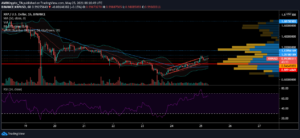According to GlobalData’s latest market model, the in vitro fertilisation (IVF) devices market is set to grow at a compound annual growth rate of 6%, resulting in a global market value exceeding $420m by 2030. This is following a highly tumultuous 2020, when IVF devices sales temporarily experienced unprecedented losses because most elective medical procedures were postponed due to the Covid-19 pandemic. Sales showed a strong recovery in the second half of last year, however, offsetting the initial losses, due to the backlog of procedure volumes and associated device sales.
IVF procedures consistently fall under elective and non-essential medical services. As such, the impact that the pandemic had on this market was significant. Early last year, the Society for Assisted Reproductive Technology (SART) and the American Society for Reproductive Medicine (ASRM) provided guidance for patients to temporarily avoid seeking pregnancy through IVF, especially for those exhibiting symptoms of the viral infection. Several months into the pandemic, results from a cross-sectional study reported that more than 80% of fertility clinics were closed due to the pandemic, with more than 15% of clinics maintaining only limited services. In the worst-hit months of the first half of last year, the IVF device market experienced a decline of more than 50% in sales in the US alone.
Shortly after the initial lockdown policies were relaxed in the third quarter across much of the world and elective procedures started resuming, most fertility clinics also resumed operations. Because of this, the market for IVF devices rebounded rapidly and experienced a remarkable surge in sales in the third quarter. This recovery was so significant that GlobalData calculates the impact of the Covid-19 pandemic on the IVF devices market last year to have been counterintuitively positive overall, as the surge in sales led to a higher-than-expected annual market value, which would likely not have happened in the absence of a pandemic-induced decline in sales in the first half of last year. Sales trends thus far this year in the US indicate a return to pre-pandemic growth levels, with GlobalData forecasting the global market to have fully stabilised by either late this year or mid-next year.
Some of the key drivers of global market growth in IVF device sales are the increasing number of fertility clinics, an increase in the average age of couples choosing to have children, and an increasing number of women opting to undergo IVF because it improves pregnancy success rates. Emerging technologies will also play a role in drawing more patients, such as time-lapse embryo culture and artificial intelligence, whereby patient profiles and embryo development are quantitatively assessed to improve pregnancy success rates using the healthiest embryos.
Source: https://www.medicaldevice-network.com/comment/in-vitro-fertilisation-devices-market-growth/
- "
- 2020
- American
- analysis
- artificial intelligence
- Children
- closed
- Compound
- COVID-19
- COVID-19 pandemic
- Culture
- Development
- Devices
- Early
- First
- General
- Global
- Grow
- Growth
- hospitals
- HTTPS
- Impact
- Increase
- infection
- Intelligence
- IT
- IVF
- Key
- latest
- Led
- Limited
- lockdown
- Market
- Market Analysis
- medical
- medicine
- model
- months
- Operations
- pandemic
- patients
- policies
- Pregnancy
- Profiles
- Rates
- recovery
- report
- Results
- sales
- Services
- set
- So
- Society
- started
- Study
- success
- support
- surge
- Surgery
- Technologies
- Technology
- Trends
- us
- value
- Women
- world
- year

